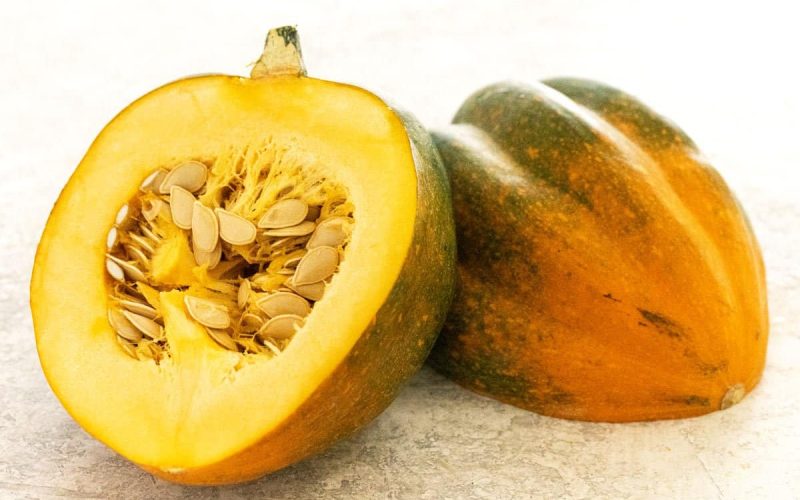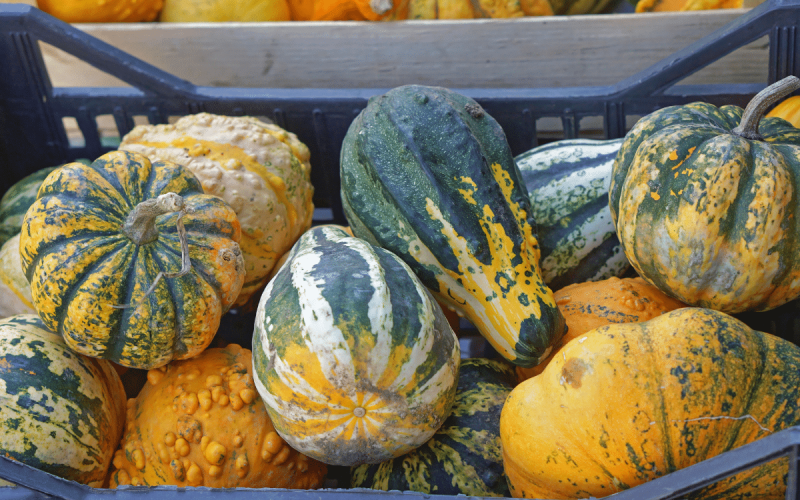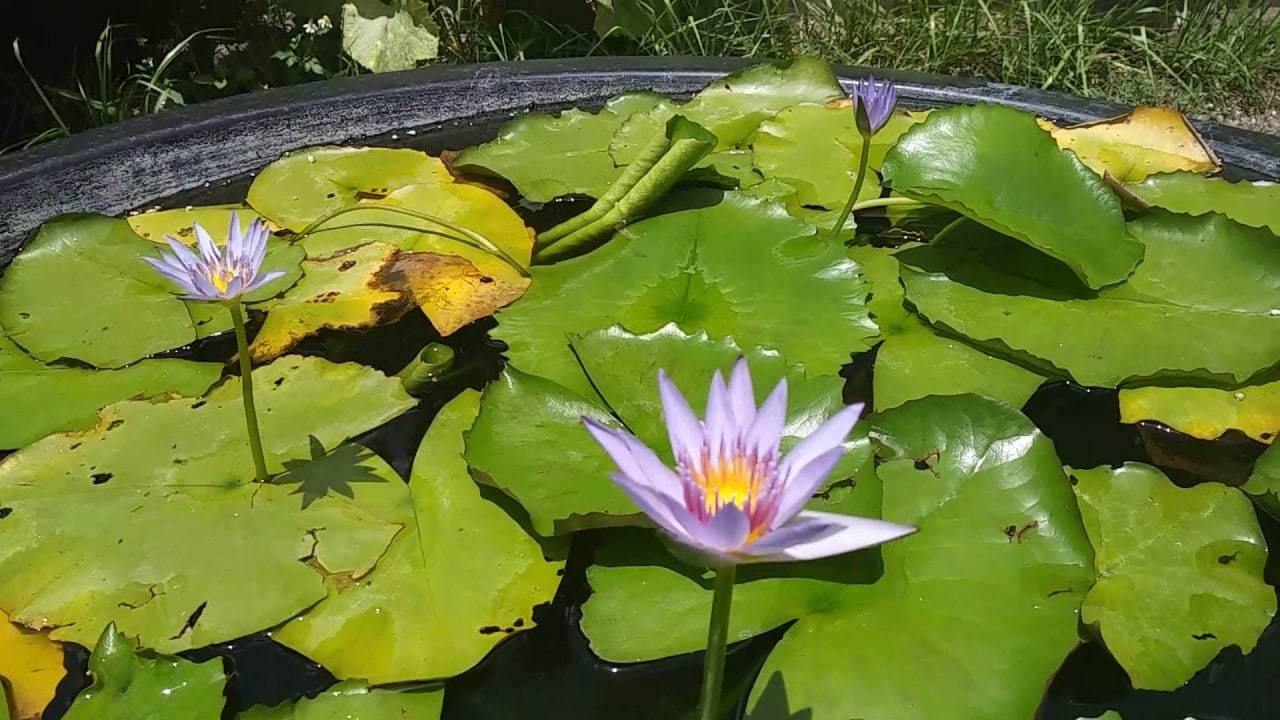Squash is a round shape fruit that grows on vines. There are different types of squash categorized into two main varieties: winter squash and summer squash.
Winter squash is usually sweeter and contains less water than summer squash.
Winter squash is also called pumpkin or gourd; the name comes from its resemblance to a giant pumpkin.
Also known as zucchini, summer squash is an excellent source of vitamin C, potassium, fiber, and other nutrients. They contain very little fat and calories.
Squash can be consumed raw in salads or cooked with different spices and herbs. You can also use it for making soups, stews, pies, bread, muffins, cakes, and even ice cream!
Here are different types of squash you should add to your recipes:
1. Acorn Squash
This type of squash is orange-yellow. Acorn squash is the most popular among the different kinds of squash because it tastes good and is easy to prepare.
You can eat this squash raw or roasted. Roasted acorn squash is delicious served with butter, honey, salt, pepper, and cinnamon. Acorn squash is rich in beta carotene, which gives it an orange color.
Also, acorn squash contains vitamins A, B6, C, E, K, magnesium, phosphorus, iron, zinc, calcium, copper, manganese, selenium, and folate.
2. Butternut Squash
Butternut squash is white and has a smooth texture. Like most types of squash, it can be eaten raw or baked. If you bake it, brush it with olive oil and sprinkle it with salt and pepper before roasting it.
Butternut squash is rich in vitamin C and contains more protein than other squashes. Furthermore, it contains riboflavin, niacin, thiamine, pantothenic acid, and folic acid.
3. Delicata Squash
This is greenish-yellow in color and sweet in taste and is often referred to as “buttercup” squash. Delicata squash may be eaten either raw or cooked, and when cooked, it loses some moisture but becomes softer.
Among the different types of squash, delicata squash is one of the richest sources of Vitamin C, and it also contains vitamin A, B6, E, and K. It has almost no fat and calories.
4. Crookneck Squash
This squash looks like a long neck when cut open. It has smooth skin, light brown, and can be eaten raw and cooked.
To cook crookneck squash, boil it first, then roast it until soft. Then mash it and season it with salt, pepper, and lemon juice.
Boiled crookneck squash is delicious served with garlic, ginger, cilantro, and yogurt.
5. Kabocha Squash
This squash resembles a small pumpkin with rough skin and is dark purple. It can also be eaten raw or boiled.
Once boiled, kabocha squash can be mashed and seasoned with salt, pepper, nutmeg, and curry powder.
Kabocha squash contains a lot of vitamin C and potassium. Also, kabocha squash includes vitamins B6, E, K, and A.
6. Pumpkin (Cucurbita pepo)
This squash is orange with thick skin and can be eaten fresh or cooked. To make soup out of a pumpkin, wash it thoroughly and remove all the seeds. Cut it into cubes and simmer it in salted water for about 30 minutes.
After that, add one teaspoon turmeric powder while cooking. Season it with black pepper, salt, and chili powder and serve it hot.
7. Spaghetti Squash
This squash has a round shape and spaghetti-like strands on its surface and can be eaten boiled or baked.
To bake it, prick the squash several times using a fork and place it on a baking tray lined with aluminum foil.
Bake your spaghetti squash at 400°F for 45 minutes, then remove it from the oven and let it cool down completely. Peel off the skin and serve it cold. Alternatively, you can microwave it for 3-4 minutes.
8. Yellow Squash
This squash can grow up to 5 inches in diameter and has thin skin and yellow flesh. Like most types of squash on this list, it can be eaten cooked or raw. Slice it lengthwise and put it in a pan filled with water to cook it.
Furthermore, please bring it to a boil and simmer it for 10 minutes, then drain it and serve it hot.
Raw yellow squash is delicious served with lime juice, salt, and pepper. Yellow squash is an excellent vitamin B1, C and fiber source.
9. Zucchini (courgette)
The zucchini we eat today is a type of courgettes; this vegetable is usually available throughout the year.
It grows in summer and autumn and is generally smaller than cucumbers and tomatoes. They’re pale green and have a mild flavor.
As usual, you can eat them raw or cooked. To cook them, slice them thinly lengthwise and steam them in boiling water for 2-3 minutes.
You may add salt and pepper while simmering. If you want to avoid the bitterness of raw zucchini, you can blanch them by plunging them into ice-cold water for 20 seconds.
After draining them well, pat dry with paper towels.
10. Buttercup Squash
This squash grows up to 4 inches in diameter. Its skin is skinny and creamy white, and it can easily be peeled if desired.
Although Butternut squash tastes excellent roasted or grilled, you can use it to make soups and stews. Gilled butternut squash makes a beautiful side dish.
To grill it, brush it with oil and sprinkle some salt and pepper over it. Grill it on medium heat for 15-20 minutes. You can also bake it instead of grilling it.
Preheat the oven to 350°F, brush it with olive oil, and sprinkle some salt, pepper, and dried oregano over it.
Place it on a baking sheet lined with parchment paper and bake it for 35-40 minutes.
Conclusion
Squash is one of the most nutritious varieties of vegetables available because they contain vitamins, minerals, antioxidants, and dietary fiber. These fruits and veggies are low in calories and high in nutrients, and they help keep you healthy and fit. Spice up your meals with the different types of squash on this list, and enjoy healthier eating!









